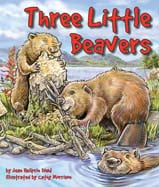Alignment to Standards for UT

| Grade | Number | Standard |
|---|---|---|
| 2 | CC-2.III.1 | Investigate relationships between plants and animals and how living things change during their lives. |
| 2 | CC-2.III.1a. | Observe and describe relationships between plants and animals. |
| 2 | CC-2.III.1c. | Create pictures and stories about real animals and compare them to make-believe stories about animals. |
| 3 | SC-3.II | organisms depend on living and nonliving things within their environment. |
| 4 | SC-4.V.2 | Describe the common plants and animals found in Utah environments and how these organisms have adapted to the environment in which they live. |
| 4 | SC-4.V.2c. | Describe some of the interactions between animals and plants of a given environment (e.g., woodpecker eats insects that live on trees of a forest, brine shrimp of the Great Salt Lake eat algae and birds feed on brine shrimp). |
| 5 | SC-5.V | Students will understand that traits are passed from the parent organisms to their offspring, and that sometimes the offspring may possess variations of these traits that may help or hinder survival in a given environment. |
| 5 | SC-5.V.1b. | Identify similar physical traits of a parent organism and its offspring (e.g., trees and saplings, leopards and cubs, chickens and chicks). |
| 5 | SC-5.V.1d. | Contrast inherited traits with traits and behaviors that are not inherited but may be learned or induced by environmental factors (e.g., cat purring to cat meowing to be let out of the house; the round shape of a willow is inherited, while leaning away fr |
| 5 | SC-5.V.1e. | Investigate variations and similarities in plants grown from seeds of a parent plant (e.g., how seeds from the same plant species can produce different colored flowers or identical flowers). |
| 5 | SC-5.V.2 | Describe how some characteristics could give a species a survival advantage in a particular environment. |
| 5 | SC-5.V.2c. | a particular physical attribute may provide an advantage for survival in one environment but not in another (e.g., heavy fur in arctic climates keep animals warm whereas in hot desert climates it would cause overheating; flippers on such anim |
| K | CC-K.III.2b. | Describe how young animals are different from adult animals. |
| K | CC-K.III.2e. | Distinguish between real and make-believe animal behaviors. |